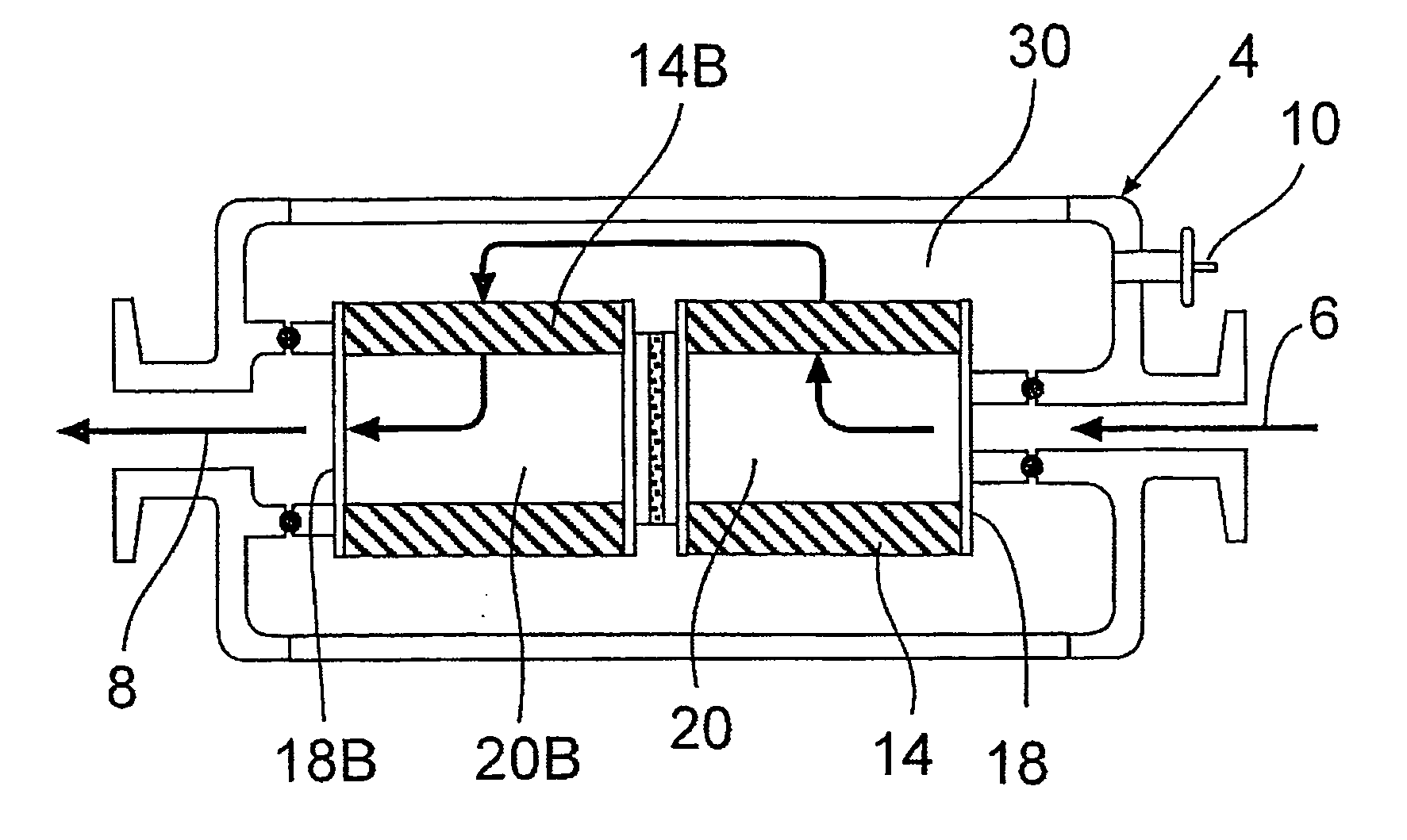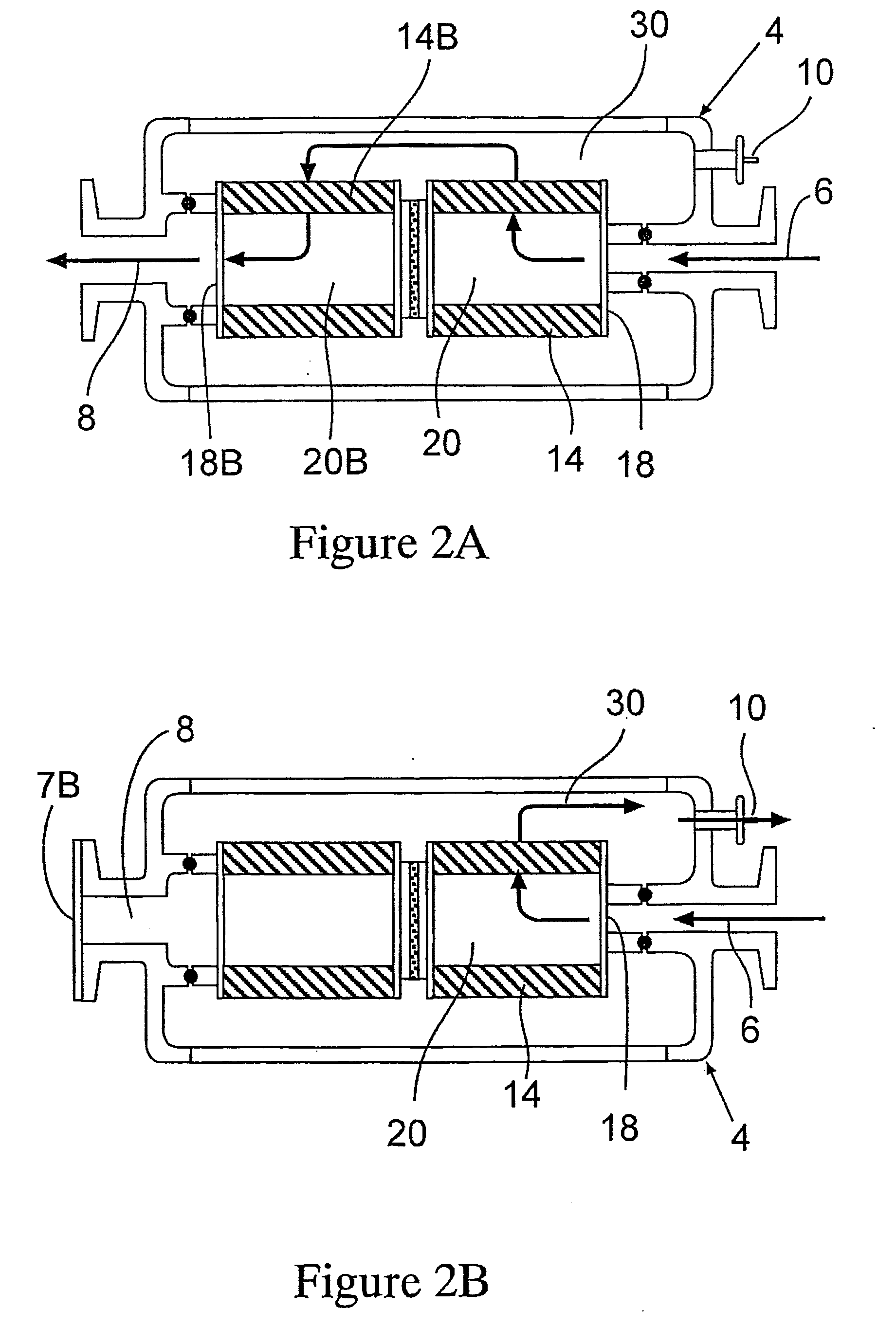Methods and systems for integrity testing of porous materials
a technology of integrity testing and porous materials, applied in the field of validation testing, can solve the problems of inability to validate pre-use, lack of assurance regarding the integrity of individual membranes within a production lot, and difficulty in executing test procedures and analysis, and achieves the effects of fast, sensitive, non-destructive, and easy execution
- Summary
- Abstract
- Description
- Claims
- Application Information
AI Technical Summary
Benefits of technology
Problems solved by technology
Method used
Image
Examples
example 1
Binary Gas Test as a Universal, a Priori Criterion for Integrity
[0081] Several membranes were tested using a feed gas containing 10+ / −3% hexafluoroethane in CO2. The tests were run at ambient temperature, with a feed pressure of 30+ / −5 psig, and a permeate pressure of 0+ / −0.5 psig. The feed and exit gas composition was measured by a Cirrus mass spectrometer (MKS, Methuen, Mass.). The hexafluoroethane concentration in the permeate gas for the membranes is listed in Table 1. The integrity of the samples was verified by independent tests.
[0082] The membranes were all made by Millipore (Bedford, Mass.) and include 0.22 micron Durapore®, a symmetric membrane made from polyvinylidene fluoride (PVDF), tested in 15 pleated 10-inch cartridge (CVGL); Viresolve® 180, an asymmetric ultrafiltration membrane made from PVDF and tested in 2 flat sheet samples; and an asymmetric ultrafiltration membrane made from polyether sulfone (PES) and tested in 5 flat sheet samples.
[0083] These membranes ha...
example 2
Determination of Defect Size Distribution and Impact on Retention
[0085] The presence of a defect resulting in a permeate concentration that differs from the predicted value for an integral membrane may not adversely affect the membrane performance. The mixed gas test allows defects to be quantified in terms of their size and population (number per unit area) and is illustrated in the pressure-ramping method operating mode described in this example.
[0086] Two asymmetric ultrafiltration membranes made from PES were cast at conditions that yielded the same pore size distribution, as measured by liquid-liquid porometry. However, the casting conditions varied so that one membrane (201) had defects, while the other membrane (205) was integral. As a result, the two membranes would be expected to have the same virus retention, with the exception of the influence of the defects.
[0087] The mixed gas test was performed with water as the pore-filling fluid and 10% hexafluoroethane in CO2 as ...
example 3
Comparison of Binary Gas Versus Air-Water Diffusion Test
[0094] The results of this example demonstrate that the mixed gas test has greater sensitivity, and is less susceptible to extraneous test variables, than the air-water diffusion test. Three single layer 3-inch asymmetric PES pleated ultrafiltration filters were made from a single roll of membrane. The filter fabrication technique may introduce defects into the filters. Consequently, the filters would be expected to have the same LRV, with any difference due to random defects introduced during module fabrication. The three filters were wetted with water and tested at three pressures following the air-water diffusion test. The results, shown in the FIG. 6, demonstrated that all three filters had the same air flow rate.
[0095] The three filters were then run with the mixed gas test using 10% hexafluoroethane in CO2 as the feed gas. The flow ratio as a function of feed pressure is shown in FIG. 7. Two filters, 110-PI-1 and 110-PI...
PUM
| Property | Measurement | Unit |
|---|---|---|
| defect size distribution | aaaaa | aaaaa |
| temperature | aaaaa | aaaaa |
| temperature | aaaaa | aaaaa |
Abstract
Description
Claims
Application Information
 Login to View More
Login to View More - R&D
- Intellectual Property
- Life Sciences
- Materials
- Tech Scout
- Unparalleled Data Quality
- Higher Quality Content
- 60% Fewer Hallucinations
Browse by: Latest US Patents, China's latest patents, Technical Efficacy Thesaurus, Application Domain, Technology Topic, Popular Technical Reports.
© 2025 PatSnap. All rights reserved.Legal|Privacy policy|Modern Slavery Act Transparency Statement|Sitemap|About US| Contact US: help@patsnap.com



